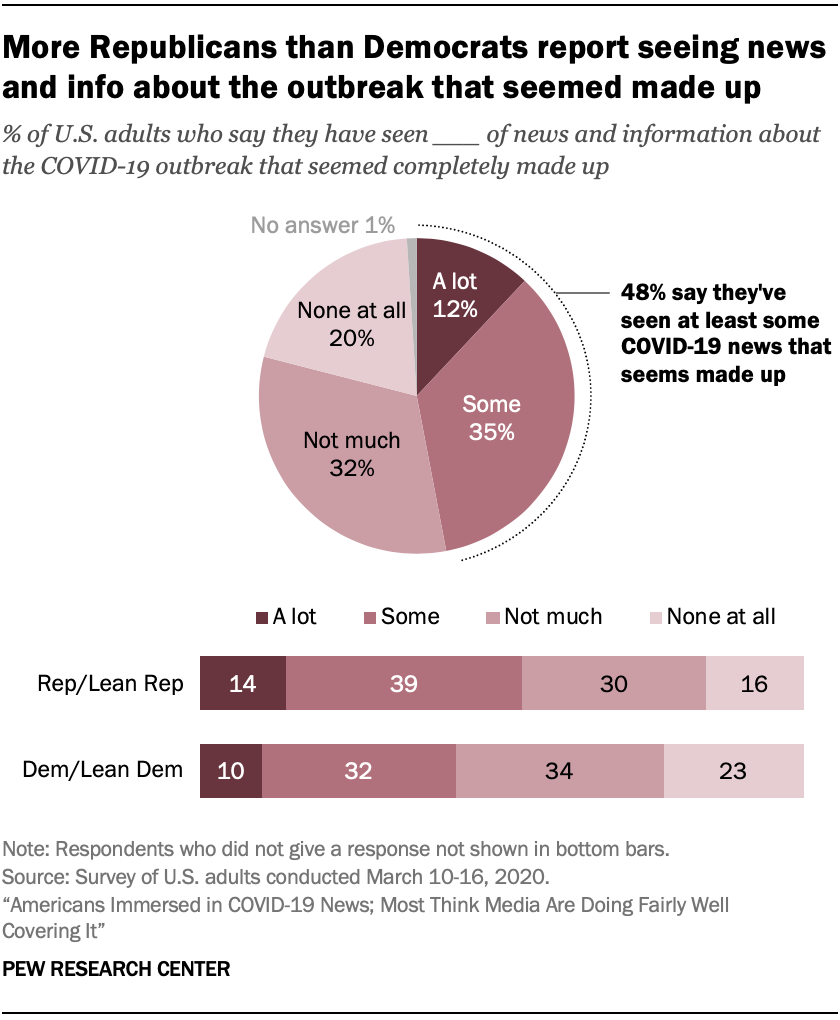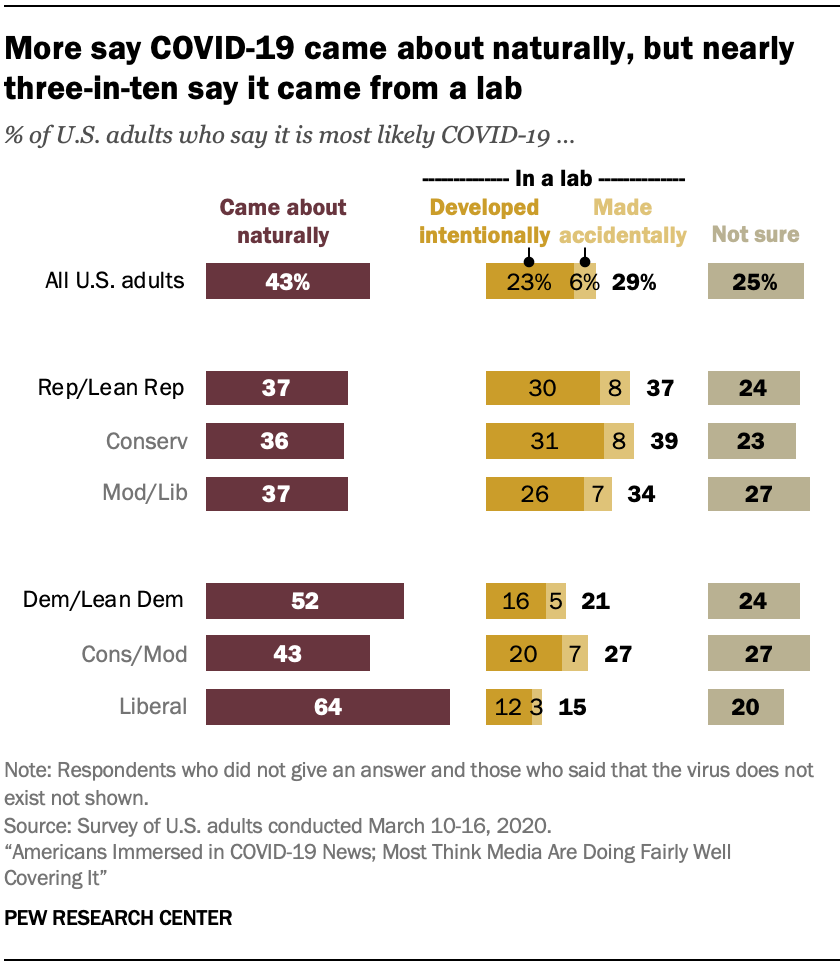 Made-up news about the coronavirus has ranged from fake cures to false news reports to conspiracy theories. These efforts seem to have had at least some impact on the American public. About half of U.S. adults (48%) report seeing at least some made-up news or information regarding the outbreak of COVID-19, with 12% saying they have seen a lot. About a third (32%) say they have not seen much, and 20% say they’ve not seen any at all.
Made-up news about the coronavirus has ranged from fake cures to false news reports to conspiracy theories. These efforts seem to have had at least some impact on the American public. About half of U.S. adults (48%) report seeing at least some made-up news or information regarding the outbreak of COVID-19, with 12% saying they have seen a lot. About a third (32%) say they have not seen much, and 20% say they’ve not seen any at all.
Republicans and Republican-leaning independents are more likely than Democrats and Democratic leaners to say they have seen at least some made-up news about COVID-19: 53% vs. 42%. About a quarter of Democrats (23%) and 16% of Republicans say they’ve seen none at all.
Adults under age 50 (52%) are somewhat more likely than those ages 50 and older (43%) to say they have seen at least some made-up news about the outbreak.
Many Americans suspect human role in COVID-19 origins
 Substantial segments of Americans think humans played a prominent role in creating the new coronavirus.
Substantial segments of Americans think humans played a prominent role in creating the new coronavirus.
While a plurality says it most likely came about naturally (43%), nearly three-in-ten say it most likely came from a lab (29%) – with 23% saying it was developed intentionally and 6% saying it was made accidentally. A quarter of the public say they are not sure how the virus is most likely to have come about.
Republicans – and conservative Republicans in particular – are far more likely than Democrats to assert human involvement in the creation of COVID-19. In fact, as many Republicans (including leaners) say the virus was made in a lab as say it came about naturally (37% for both) – with 30% saying it was created intentionally.
Conservative Republicans are more likely than moderate or liberal Republicans to say the virus was an intentional human effort (31% vs. 26%).
Among Democrats, about half (52%) say the new coronavirus came about naturally, but a good deal of uncertainty still exists. Roughly two-in-ten (21%) express a belief in human involvement, including 16% who think it was intentionally made; the remaining 24% are unsure.



